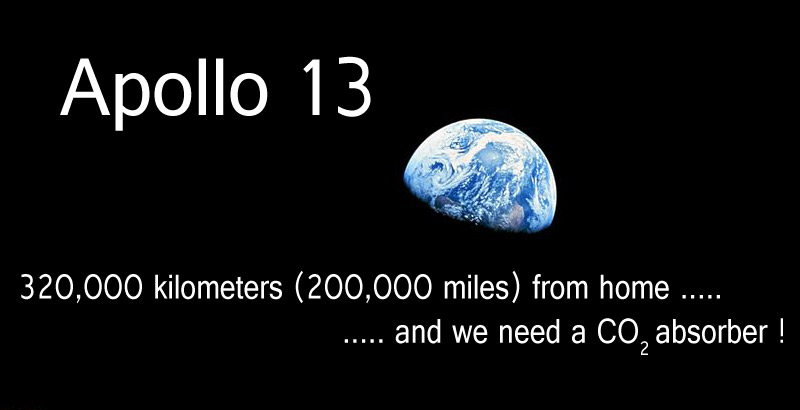
Unless you are an anaesthetist, you probably wouldn’t know what a carbon dioxide absorber is (red arrow below).

However, for a brief period in the year 1970, carbon dioxide absorbers were what everyone was talking about. This is the story of Apollo 13 which blasted off in 1970 towards the Moon. However, things did not go according to plan and an explosion in the spacecraft left three astronauts stranded 200,000 miles from home. Suddenly this story became headline news. The whole world got to know how the astronaut’s survival depended on whether they could make a carbon dioxide absorber using the limited materials available in their spacecraft.
On July 21, 1969, Neil Armstrong stepped off the ladder of his spacecraft and became the first human to walk on the Moon. The first words spoken by him on the Moon that day are still remembered.
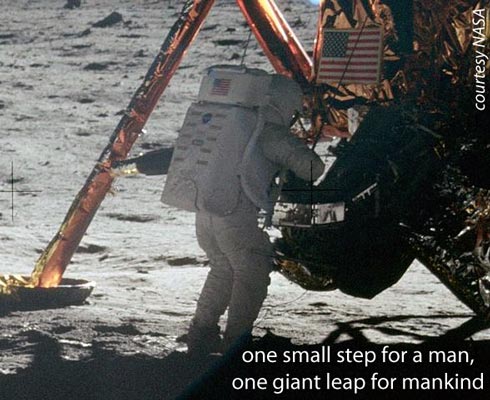
The first lunar landing was part of a series of space missions of the Apollo Space program. On April 11, 1970, it was the turn of Apollo 13 to lift off. This was going to be the third team to land on the Moon. The three astronauts (Lovell, Swigert, and Haise) for this mission were sitting on a massive rocket that would take them into outer space. The rocket (Saturn V), shown below, was about 110 meters tall (360 feet), had a diameter of about 10 meters (33 feet) and weighed about 3,000,000 kilograms (6,500,000 pounds). To appreciate the size of this mammoth rocket, compare its height with the man standing near it (tip of the red arrow).
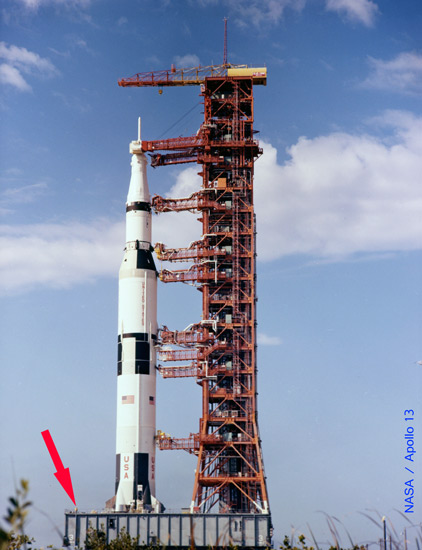
If you are superstitious and believe that the number 13 is not lucky, then you will be forgiven for thinking that the launch time was rather “unlucky”. Apollo 13 launched at 13:13 ( North American Central Time Zone ).
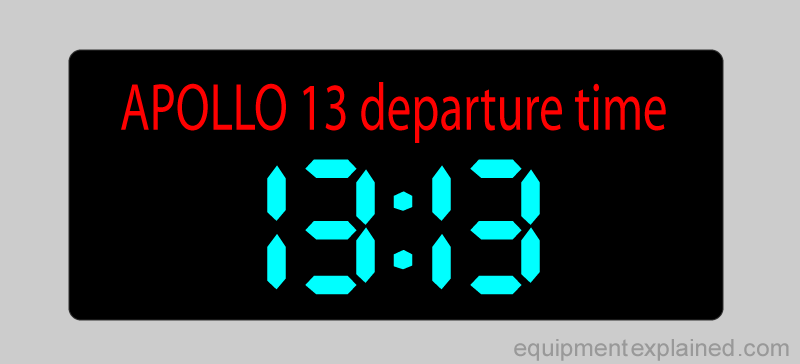
The image shows the gigantic rocket launching into space.

Within one minute of lift-off, the rocket was travelling at the speed of sound. The rocket was built of various sections and as it went up into space, to avoid carrying unnecessary weight, it was designed to discard sections of itself that were no longer of any use (e.g. parts containing empty fuel tanks). Below is an image of a rocket throwing away a part of itself as it made its way to outer space. These massive pieces fell into the sea ( hopefully not hitting any fishermen below !).
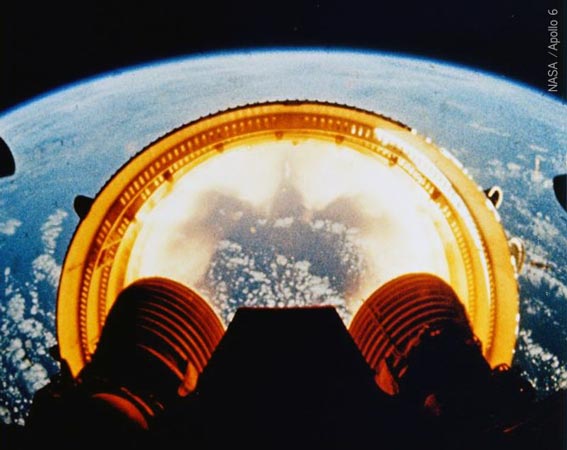
Within about 15 minutes the astronauts reached outer space and started orbiting around Earth. Their orbiting spaceship would have looked like this.
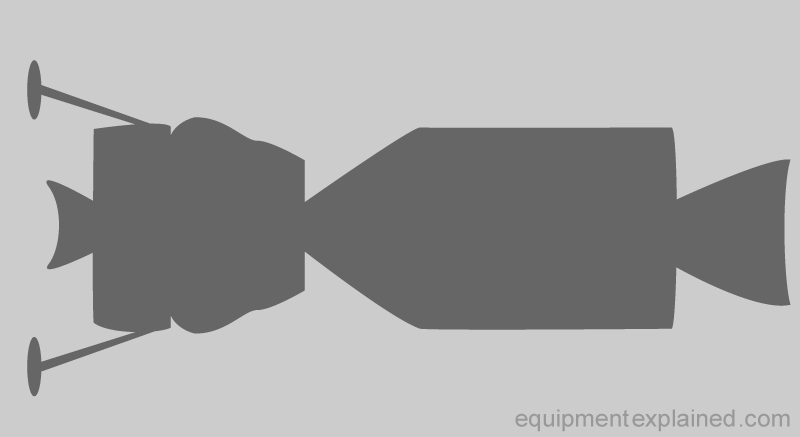
The “spaceship” actually consisted of three parts. These parts will be briefly explained to you so that you will later better understand the drama that took place in this mission.
Let us begin with the “command module “. This is a rather cramped compartment (shown in green below) in which the three astronauts mostly travelled inside.
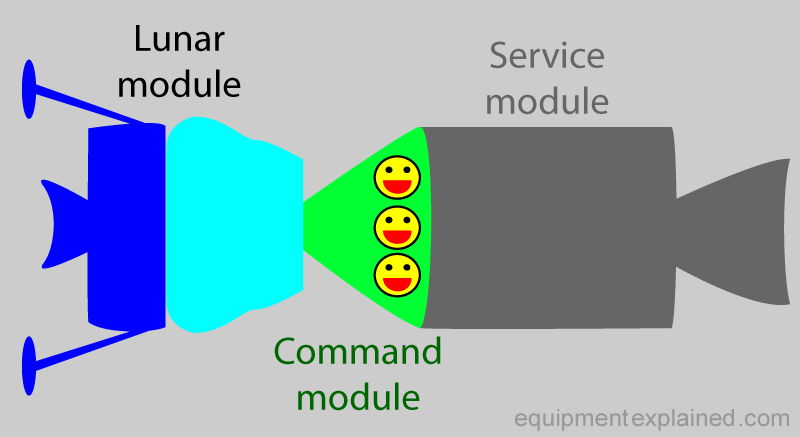
The command module was attached to a large section called the “service module “. This had an engine to take the astronauts towards the moon and back again towards Earth. Importantly, the service module also provided life-sustaining functions for the astronauts, such as giving oxygen, water and electricity.
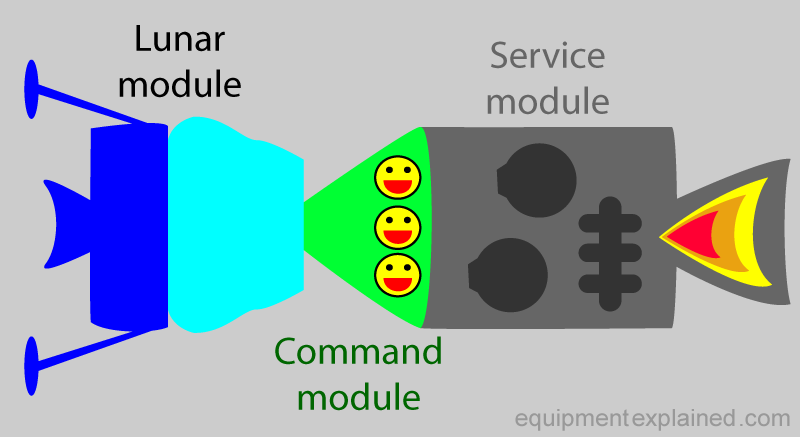
The service module had tanks of liquid hydrogen and liquid oxygen. It also had special devices called “fuel cells”. These fuel cells were able to take hydrogen and oxygen from the tanks to produce water and electricity.
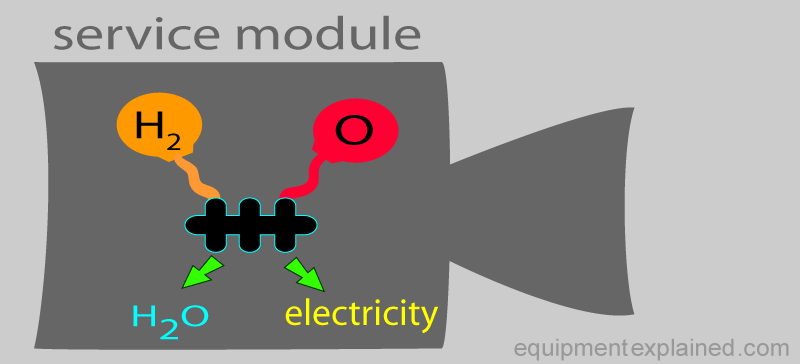
Here is a picture of an actual fuel cell.
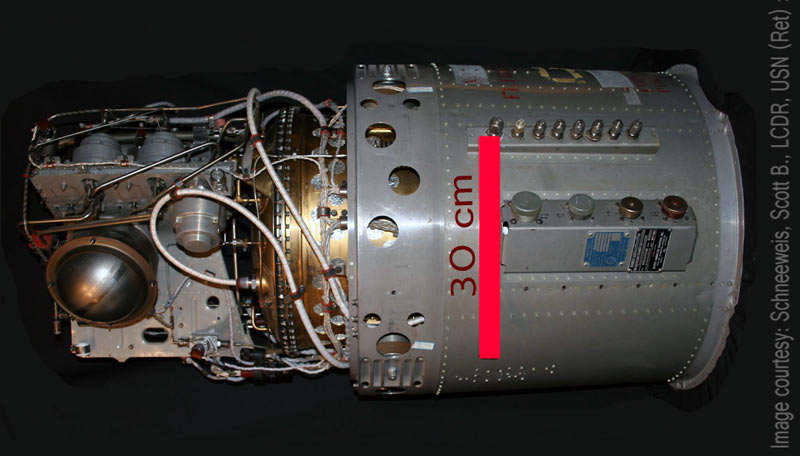
So you can see that the service module provides vital supplies of oxygen, water, and electricity for the astronauts sitting in the command module.
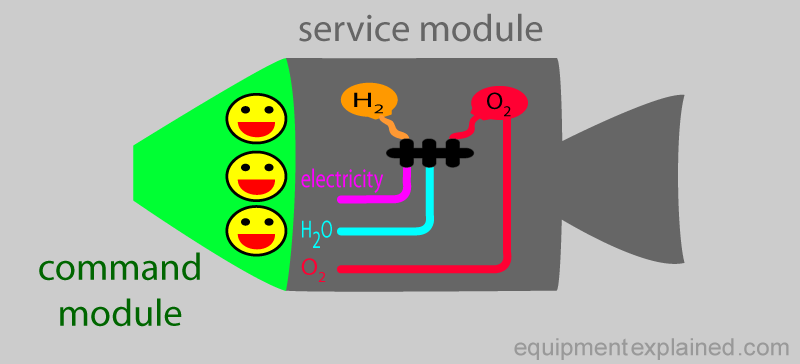
Here is an actual picture of a command module and service module attached together.
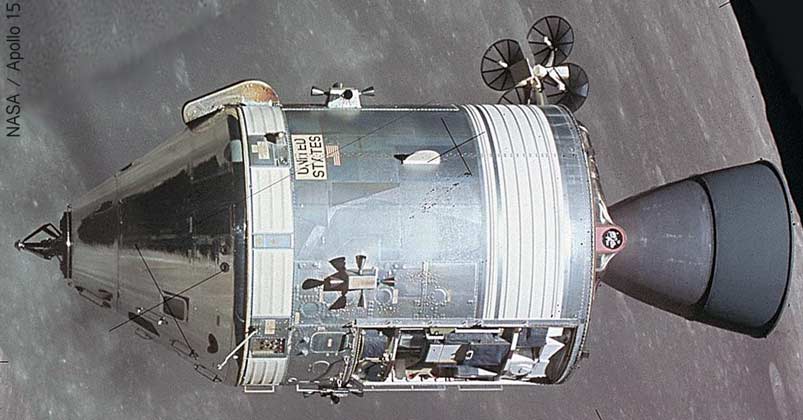
The third part of the “spaceship” is the lunar module.
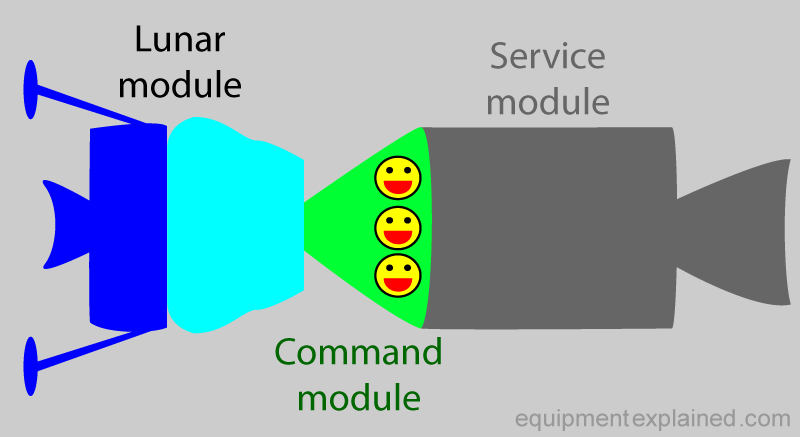
The lunar module is used to descend to the Moon, and of course, return back up as well. You will understand the role of the lunar module and the other parts better if I briefly describe to you how a typical Moon mission is expected to happen. Please note that Apollo 13 had a mishap and could not do what is described below. However, by understanding what should have happened, you will better understand the drama that happened.
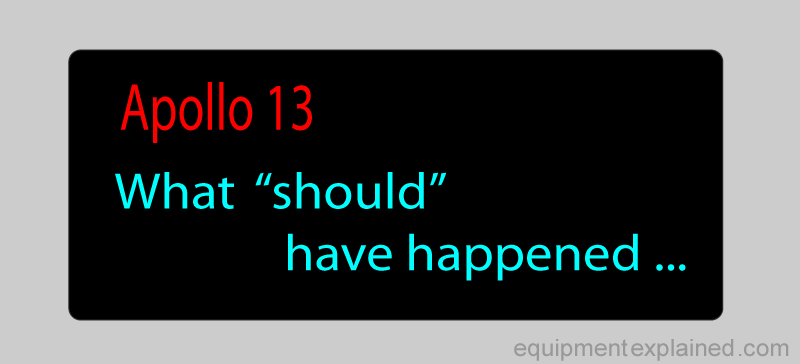
So, if things went according to plan, the spaceship, with its three main components, would have arrived at the Moon and orbited around it.
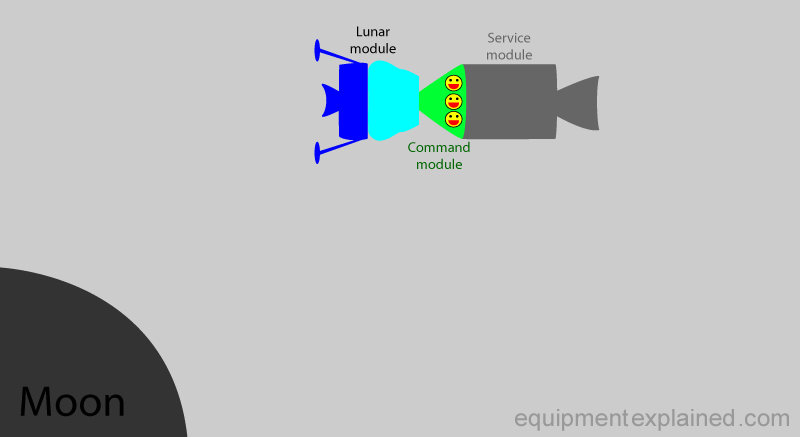
Two of the astronauts would move into the lunar module. Unfortunately, one unlucky astronaut would have to remain back in the command module to look after it.
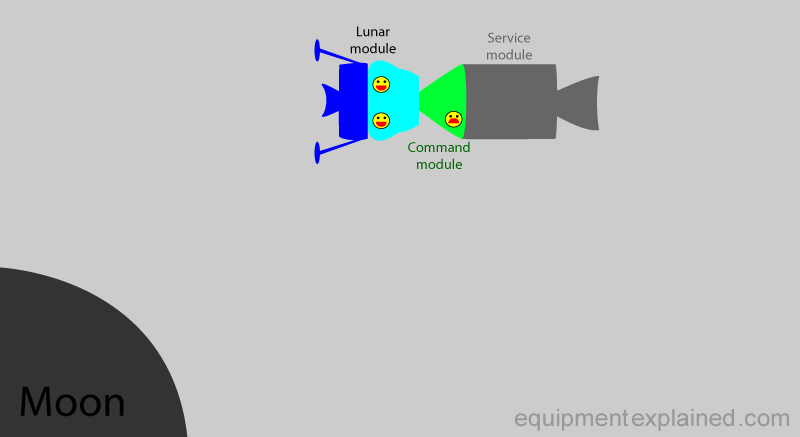
The lunar module, with the two happy astronauts, separates from the command module and descends onto the Moon.
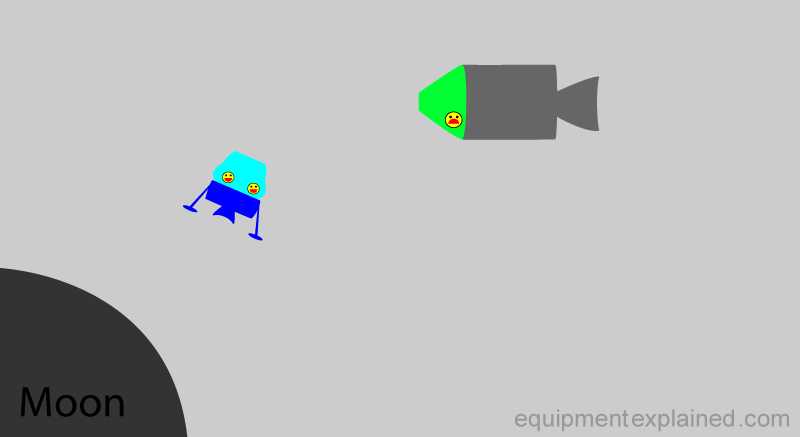
Once safely down on the Moon, they would prepare to get out and explore the surface.
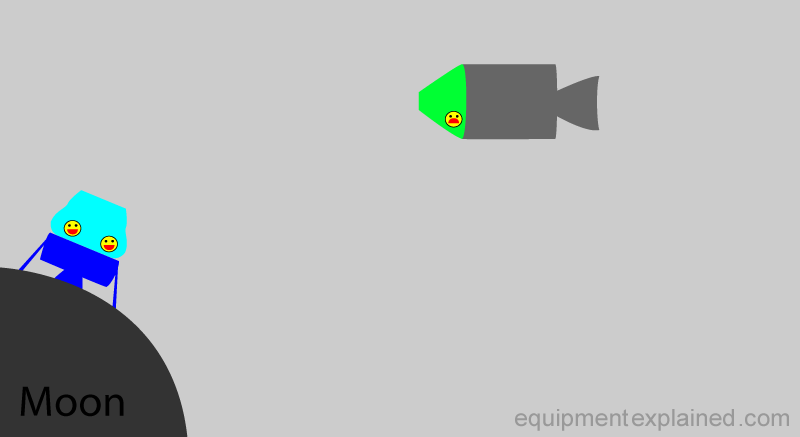
The astronauts would get into their space suits and venture out of the lunar module.
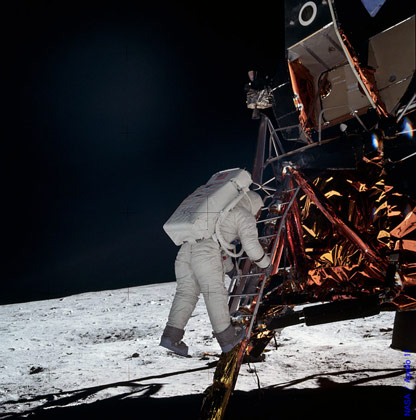
Many missions even took along a “car” to explore greater distances.
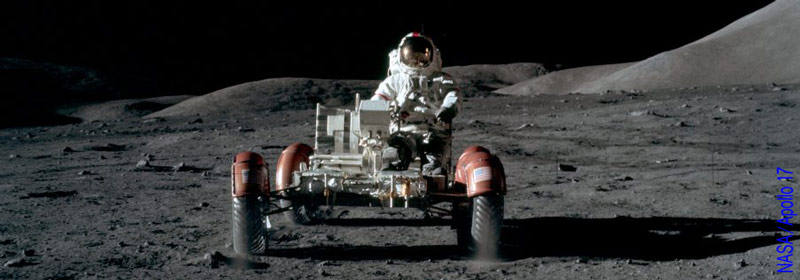
After the two astronauts would have enjoyed exploring the Moon, they’d get back into the lunar module. This has a small engine that blasts them away from the Moon.

The lunar module takes them back towards the command module floating above. A part of the lunar module (dark blue below) is not required any more and is therefore left behind on the Moon (yes, we humans have polluted the Moon).
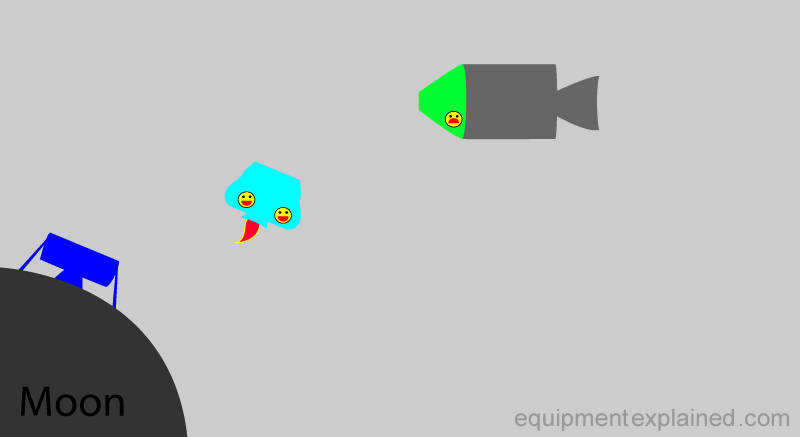
The lunar module then rejoins the command module. The two astronauts move back into the command module and share their stories with the jealous colleague who they left behind.
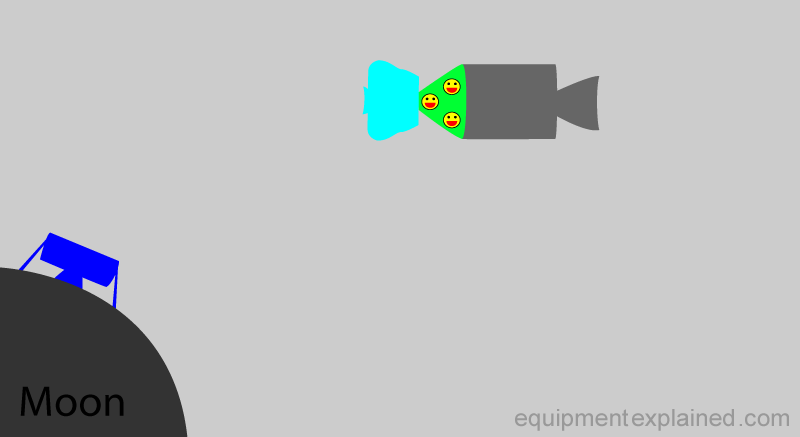
The lunar module is now thrown away as it is no longer needed.
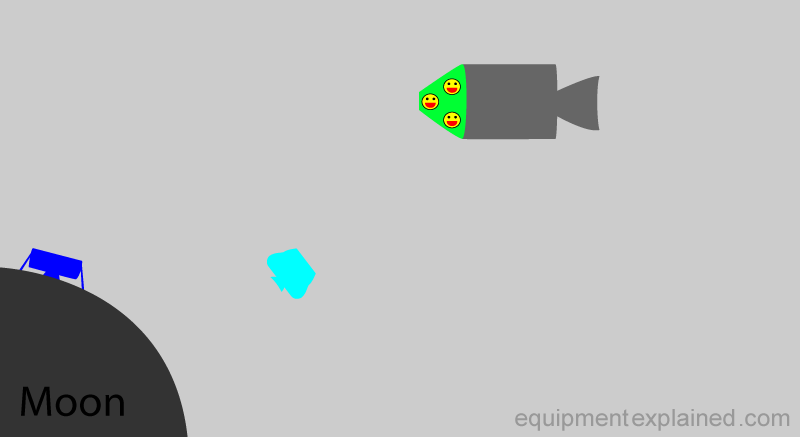
The service module brings the command module, with its three astronauts, towards Earth.

The command module then separates away from the service module.
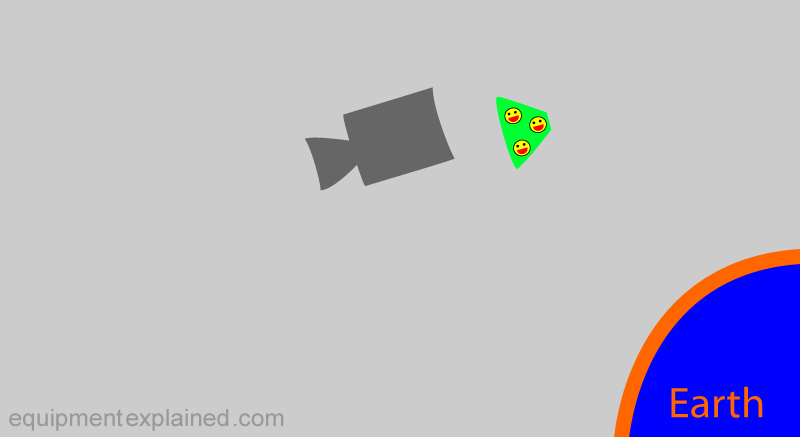
The command module, with its three astronauts, now “falls” into Earth.
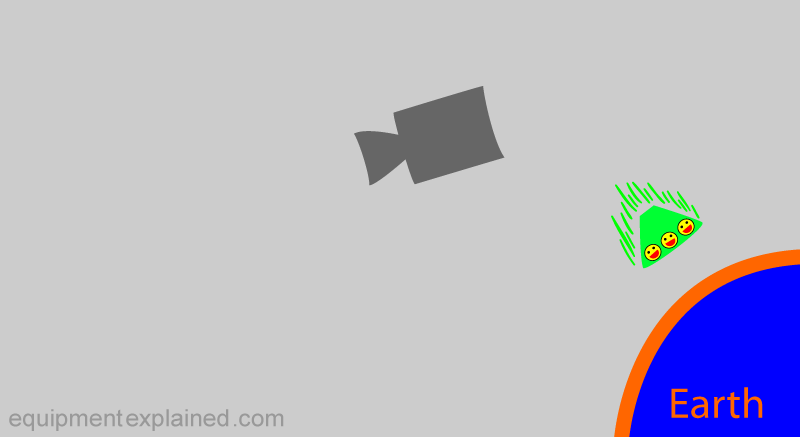
Towards the end of the journey, large parachutes open and help slow the command modules fall towards Earth. It eventually splashes onto the ocean and the astronauts would be rescued by a waiting ship.

Now, the above sequence is what should have happened if everything went to plan for Apollo 13. Here is the drama that actually happened.
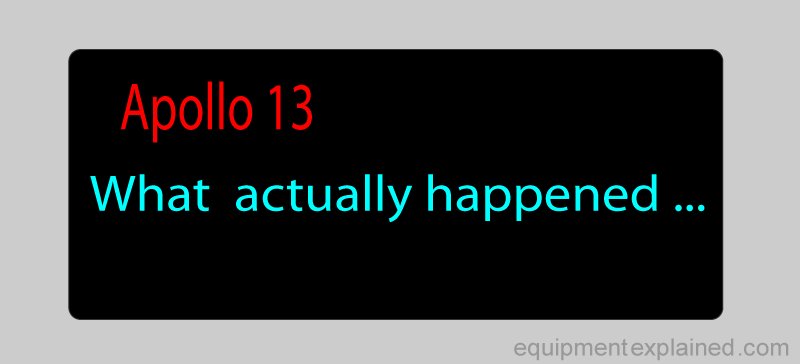

I am the author of this website. Let me tell you about another website I created that you may like. I am interested in psychology, especially how one’s thinking can affect one’s happiness. I have made a website that explains a concept called “Happy Thinking”, which is about how one can find happiness by changing one’s way of thinking. Happy Thinking is an easy-to-understand concept that you can use in daily life to be happier. You can learn about it on the free website at the link below.

If you are into believing that the Number 13 is unlucky, you will find it interesting that the date things started going wrong for Apollo 13 was April 13, 1970 ( North American Central time zone).
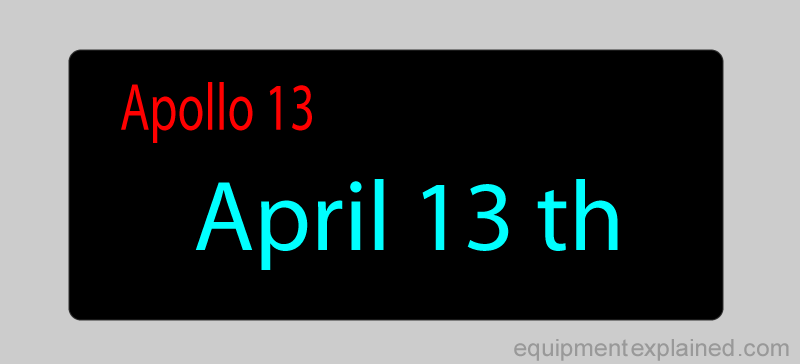
The space flight had so far gone on for nearly 2 days with no huge problems.

As part of their “public relations” duties, the astronauts were required to make regular live TV broadcasts from space. Shown below is such a broadcast appearing on the main screen of the control room. The sad thing was that by the time Apollo 13 was flying, the public was no longer fascinated by journeys to the Moon. Most TV networks didn’t even bother to show these live broadcasts, choosing instead to show comedy shows etc. Nevertheless, the astronauts did their duty and did these regular live shows.
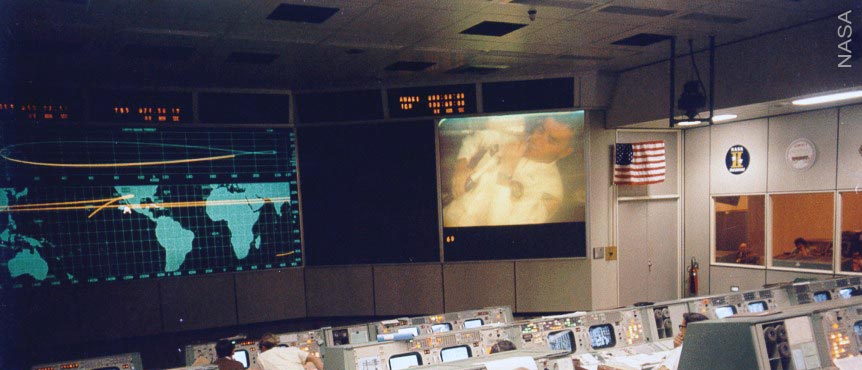
However, two minutes after one such broadcast everything changed. Suddenly Apollo 13 would be headline news. It all began with the astronauts hearing a loud bang.

The service module had two oxygen tanks keeping liquid oxygen under very high pressure. One of the two oxygen tanks in the service module had exploded.
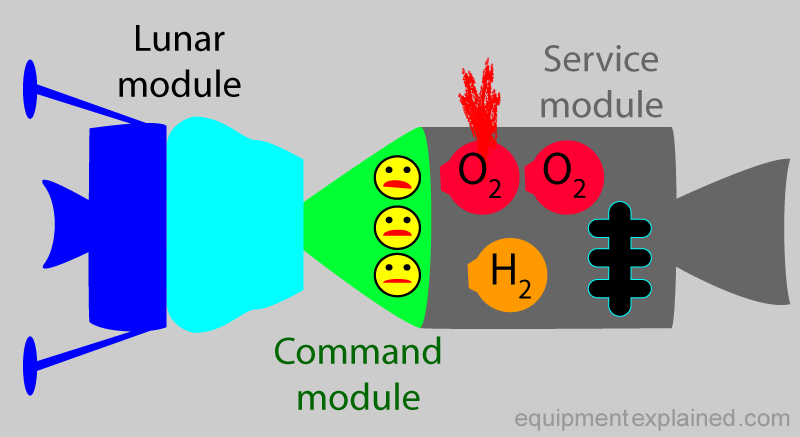
Clearly, this was not good news, but there was even more bad news to come. The explosion of the first oxygen tank had also damaged the connections to the only remaining second oxygen tank. This made both tanks lose oxygen relatively fast.

You will recall that in the service module, the oxygen goes into the fuel cells to create water and electricity. Now with the oxygen tanks emptying fast, there soon would be no oxygen to breathe, no water, and no electricity. It was a desperate situation to be, 200,000 miles from home.
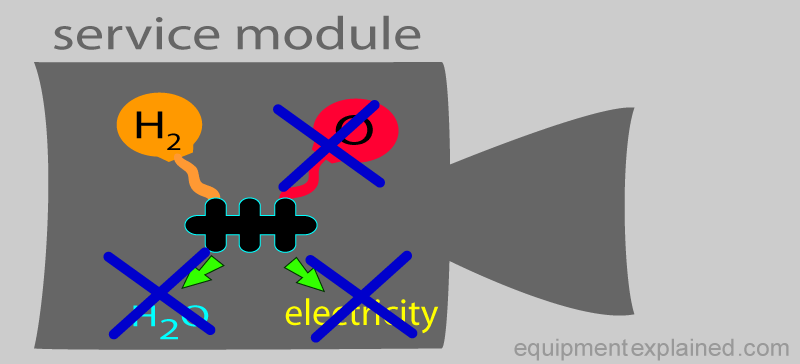
As the oxygen levels were dropping, something drastic had to be done to save the lives of the astronauts. The astronauts were instructed to move over to the lunar module.

Fortunately, the lunar module had a good stock of oxygen. The lunar module was designed to, when on the Moon, to let astronauts enter and leave it to explore the lunar surface. Each time its door would be opened for the astronauts to venture out, there would be a loss of oxygen. To cope with this regular loss, the lunar module carried a good supply of spare oxygen. So for the moment, while in the lunar module, the astronauts had enough oxygen to breathe. However, unfortunately for technical reasons, this oxygen could not be connected to the service module to generate water and electricity
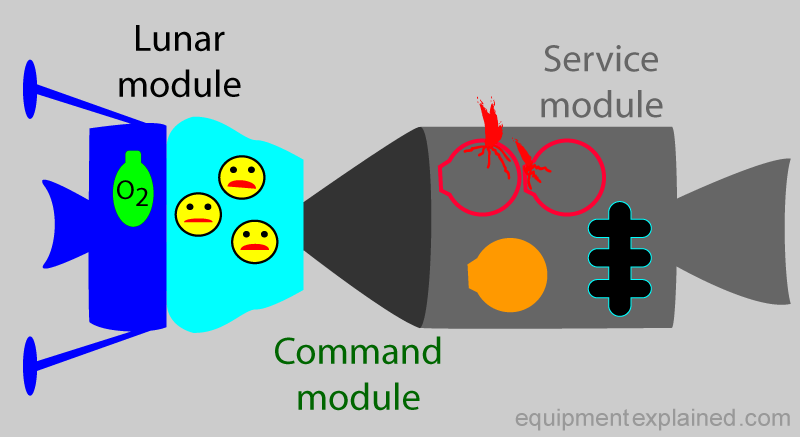
Now to the problem of electricity. The lunar module and the command module had batteries. The battery in the lunar module (” A ” in the image below) was designed to provide power only during the short time the astronauts were expected to stay on the Moon. The battery in the command module (” B “) was there to be used only at the last moment when returning to Earth and was not designed to provide much power at other times.
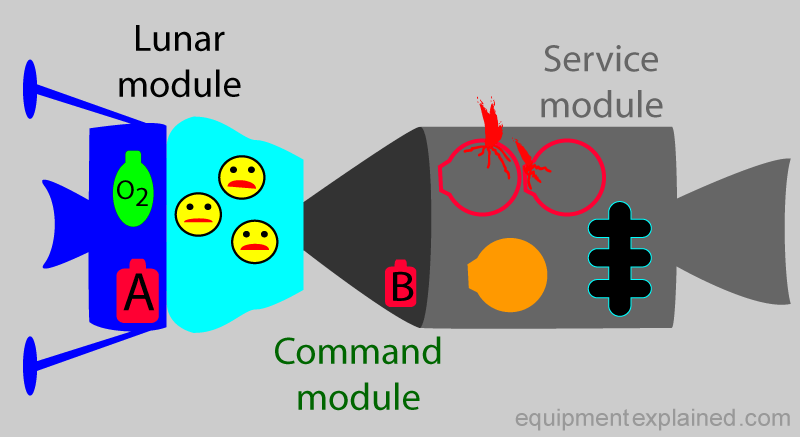
So the spaceship had very limited battery power available. If the batteries ran out of power, there would be no way to recharge them in space since the service module was damaged. Without electrical power, the vital electronics of the spaceship would have failed and the astronauts would not have been able to return to Earth.
The engineers on the ground worked frantically to find a solution. They finally worked out a method to minimise the power consumption of the spacecraft to help prolong the battery life. The ground engineers told the astronauts what electrical systems were “less essential” and these were shut down. By doing this, they managed to reduce the power consumption by 80 %. This was not an easy task. For example, without electrical power, the temperature in some areas of the spacecraft dropped to nearly 4 degrees centigrade (about 40 Fahrenheit).
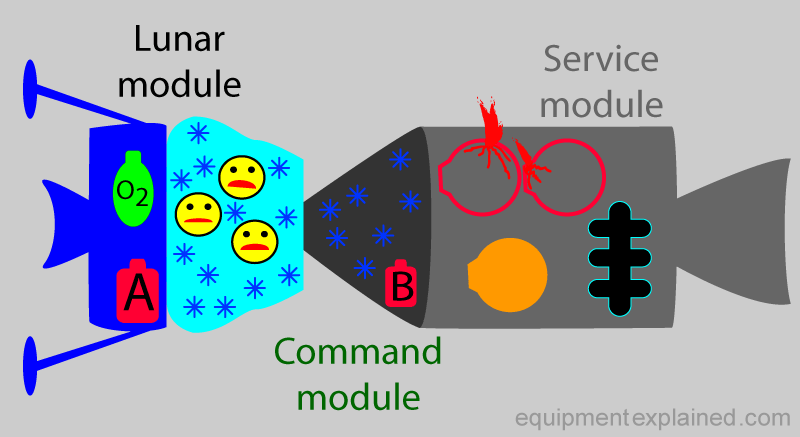
The other big problem was water, since without oxygen, the fuel cell could not create water. The problem was that water was needed not only for the astronauts but it was also used to cool vital electronic systems. The astronauts restricted their water intake dramatically (e.g. up to 170 ml per person per day) to conserve water. One of the astronauts developed a serious urinary tract infection and it is possible that this was triggered by the dehydration they had to endure.
Due to technical reasons (e.g. to make use of the gravity of the Moon), the return path to Earth would have to take them around the Moon first. This meant that the astronauts had to survive for about 4 days before hoping to land on Earth. The ground control centre calculated that there should be enough oxygen to survive the journey. They also worked out that there was just about enough electrical power and water for the return journey.
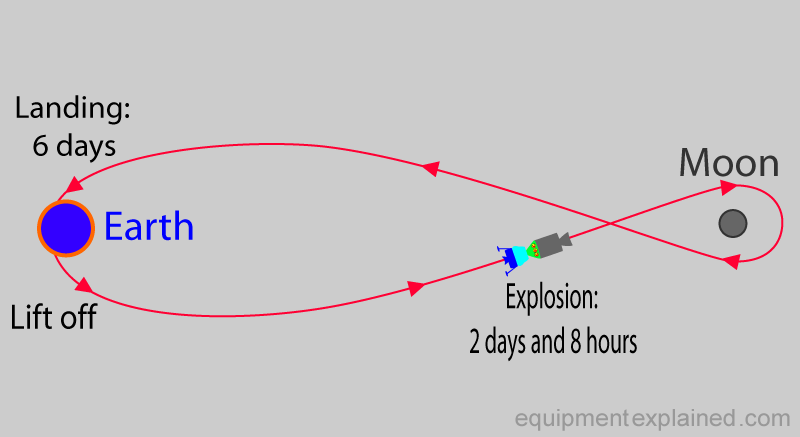
In the midst of all this, the crew were very disappointed that they would not be landing on the Moon. They could only admire the Moon and take pictures from the small windows of their spacecraft.
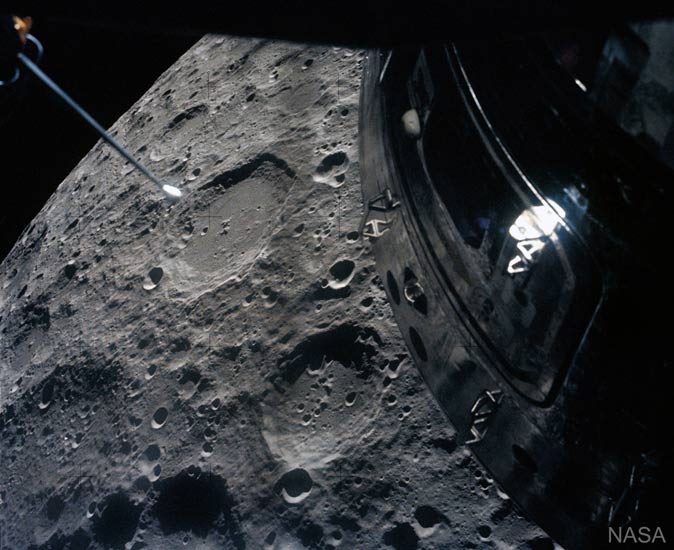
Please click the “Next” button below to read part 2 about this amazing story. Thank you.